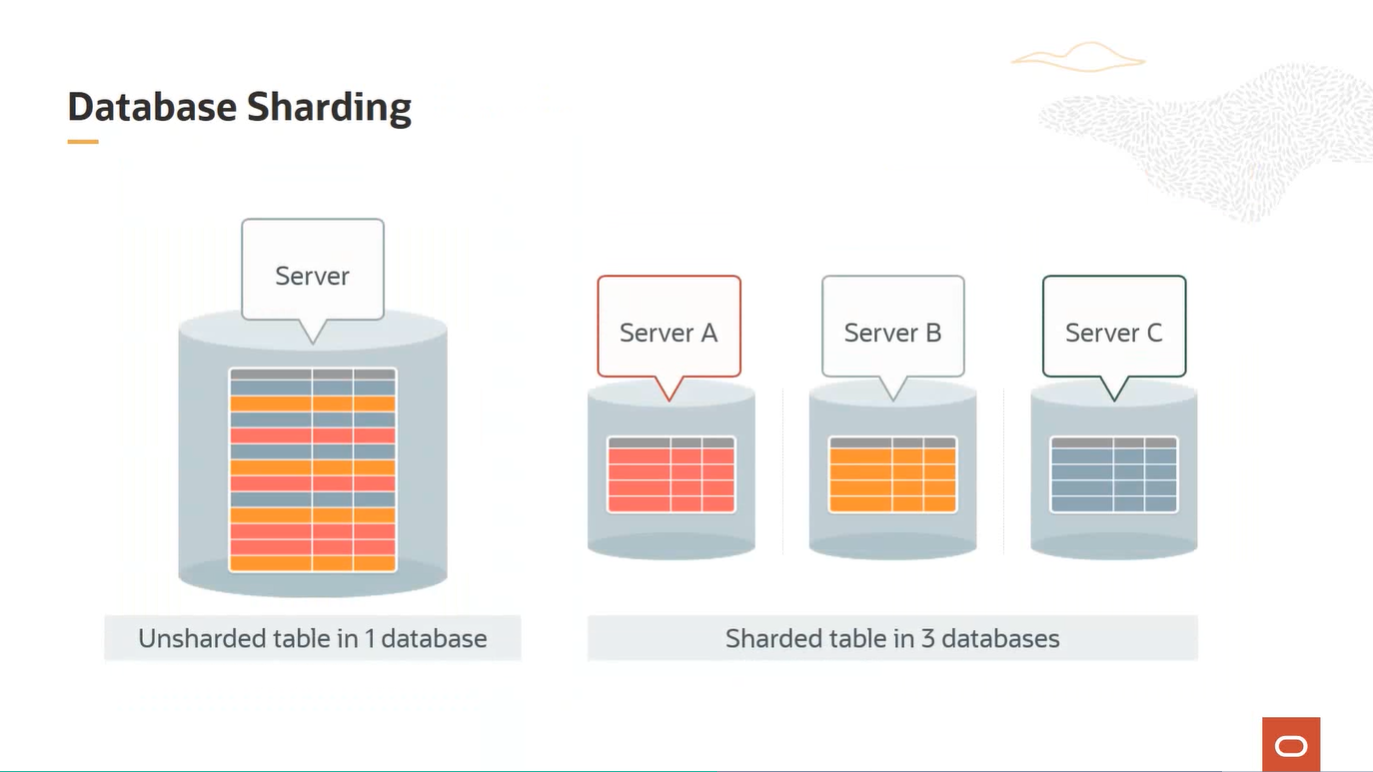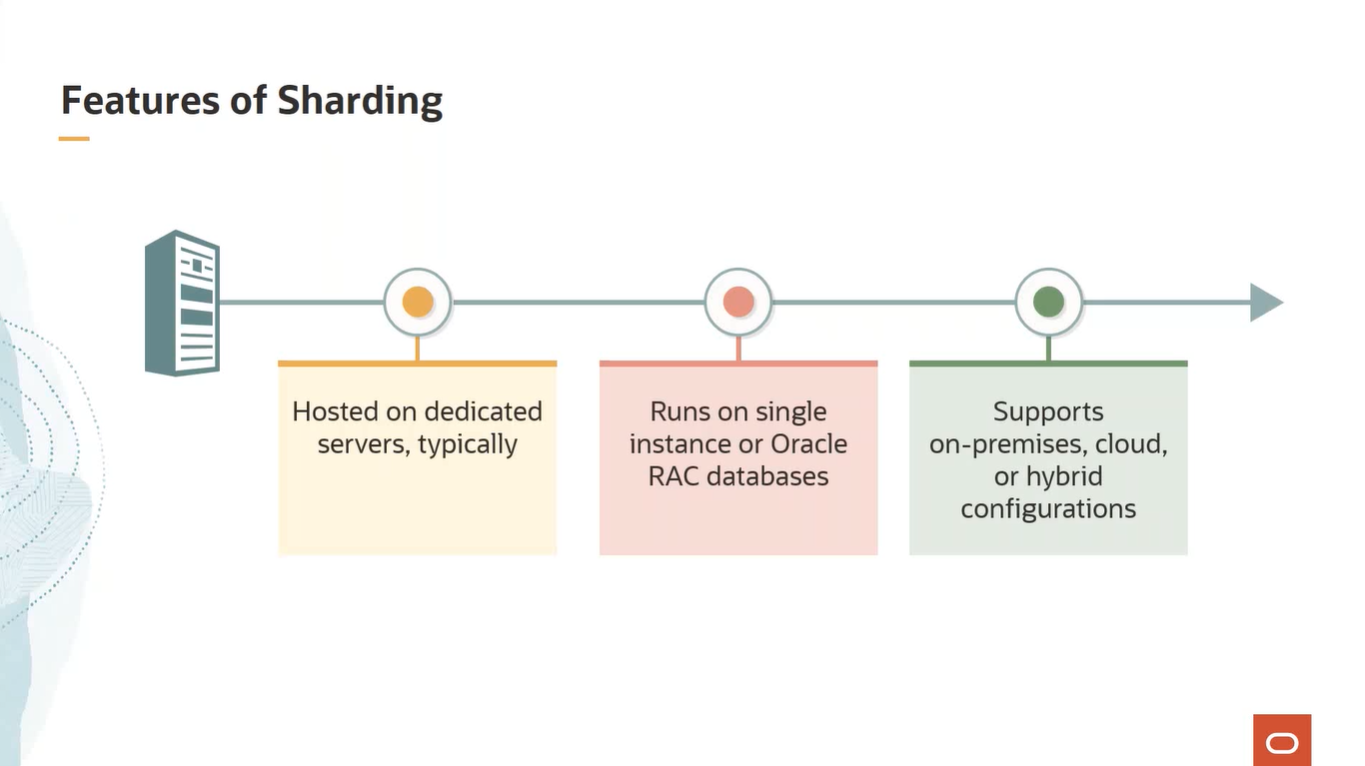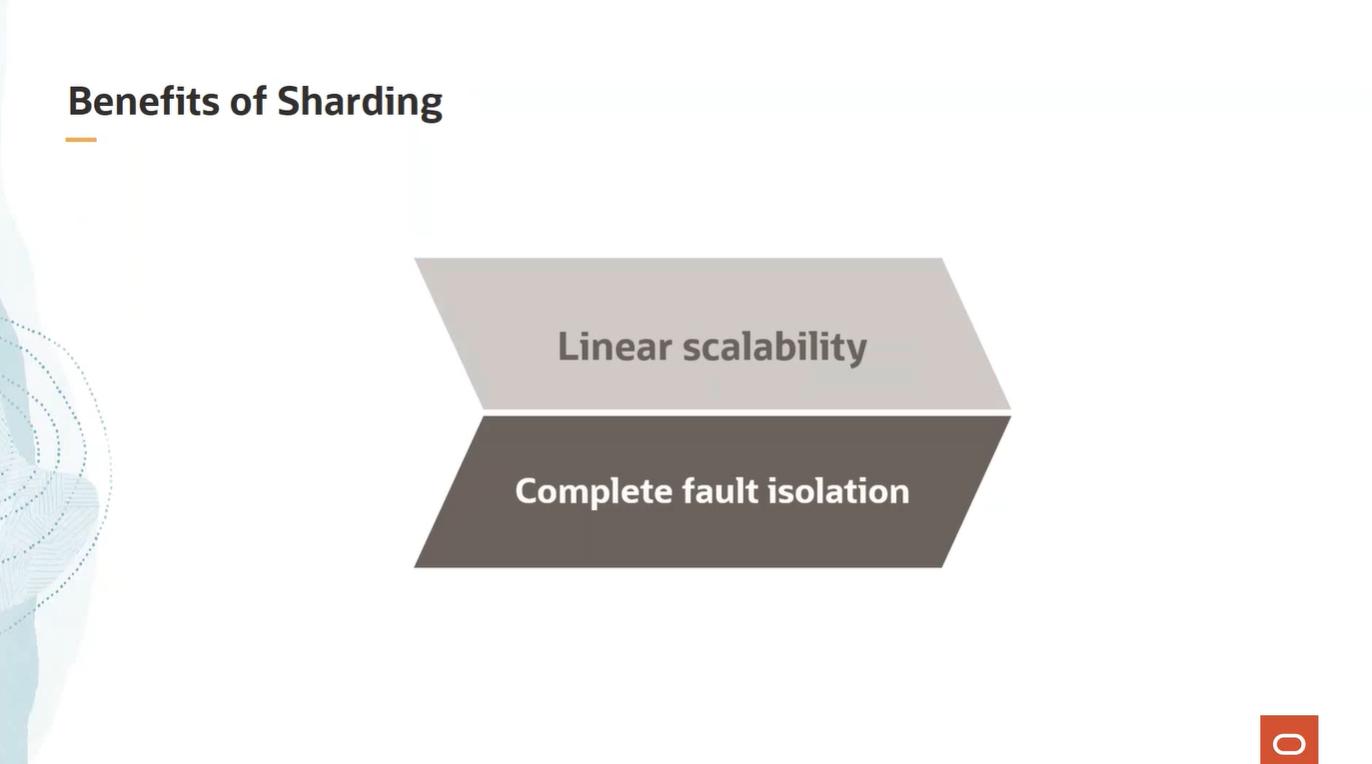
Welcome to the next topic on Oracle Database Sharding. In this topic, I will describe Oracle Database Sharding architecture. Sharding is a data tier architecture where data is horizontally partitioned across independent databases. Each database in such a configuration is called a shard. All shards together make up a single logical database, which is referred to as a sharded database or SDB.
Sharding is using a shared-nothing database architecture, because shards do not share physical resources such as CPU, memory, or storage devices. Shards are also loosely copied in terms of software. They do not run clusterware. From a database administrator's perspective, an SDB consists of multiple databases that can be managed either collectively or individually. However, from an application developer's perspective, an SDB looks like a single database. The number of shards and the distribution of data across them are completely transparent to database applications.
Horizontal partitioning used in sharded databases involves splitting a database table shards so that each shard contains the table with the same columns but a different subset of roles. The diagram in the slide shows an unsharded table on the left, with the rows represented by different colors. On the right, the same table data is shown horizontally partitioned across three shards or independent databases. Each partition of the logical table resides in a specific shard. We refer to such a table as a sharded table.
Shards are typically hosted on dedicated servers. These servers can be commodity hardware or engineered systems. The shards can run on a single instance or Oracle RAC databases. They can be placed on-premises, in a cloud, or in a hybrid on-premises and cloud configuration.
The key benefits of sharding are linear scalability and complete fault isolation for the most demanding OLTP applications. Sharding is intended for custom applications that are suitable for a sharded database architecture. Applications that use sharding must have a well-defined data model and a data distribution strategy that primarily accesses data using a sharding key. Examples of sharding key include customer ID, account number, or country ID.
This includes the topic on Oracle Database sharding architecture.



